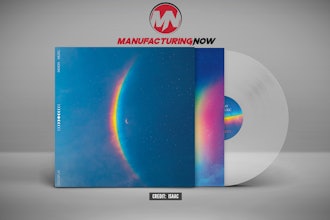A traditional cast with an outer layer made from plaster or fiberglass is more than sufficient for a human with a broken bone. But for a gorilla, which is about 10 times stronger than a human being and less likely to put up with some discomfort, that type of cast doesn’t stand a chance.
Gladys, an 11-year-old gorilla at the Cincinnati Zoo & Botanical Garden, recently fractured her humerus while fighting with two younger females in her troop. Victoria McGee, Cincinnati Zoo’s Zoological Manager of Primates, said it’s pretty common for gorillas to engage in minor squabbles. She said, “She must have fallen in just the wrong way to break her arm, but the result was a complete, oblique fracture of her distal humerus.”
A broken arm is an uncommon injury for gorillas in captivity so the Zoo turned to surgeons from Cincinnati Children’s and anesthesiologists from the University of Cincinnati College of Medicine for help with repairing the fracture and setting the arm. Knowing the temporary cast wouldn’t last long, the Zoo asked GE Additive for help constructing something more indestructible.
Most Read on IEN:
- Podcast: The Loophole Crippling Manufacturing; Tesla Cuts Jobs; Toxic Supplements
- Mercedes-Benz Debuts Future of Delivery
- World’s Largest Hydrogen Ships Are Being Built in Norway
- L3Harris Invests $40 Million to Boost U.S. Rocket Motor Production
GE Additive was able to design, print and iterate a custom titanium cast for the young gorilla, and have the whole project done in a fairly short amount of time.
3D-printed casts like the titanium model fabricated for Gladys have obvious benefits like resistance to being torn to shreds by a curious gorilla. But 3D-printed casts are also options for humans and they come with a separate set of pros when compared to traditional casts.
The Mayo Clinic in Florida has been experimenting with 3D-printed casts, which it said can provide a more hygienic experience for people recovering from fractures. If you’ve ever broken a bone and needed a cast, you know how itchy, sweaty and generally uncomfortable plaster casts can be. Using a waterproof polymer, the Mayo Clinic is able to print casts that make it easier for wearers to bathe, sweat and do other things that are much more difficult with a traditional cast.
3D-printed casts are not necessarily a mainstream medical technology yet but if super strong gorillas keep breaking their arms and people keep seeking more comfortable options, they could really catch on.
Click here to subscribe to our daily newsletter featuring breaking manufacturing industry news.






















